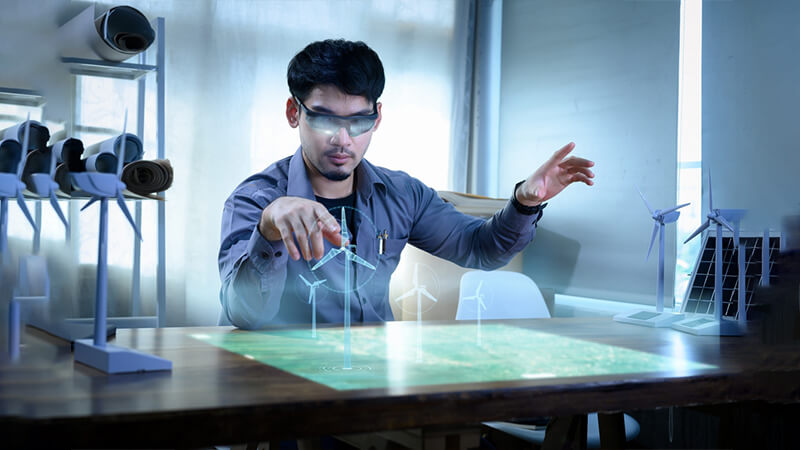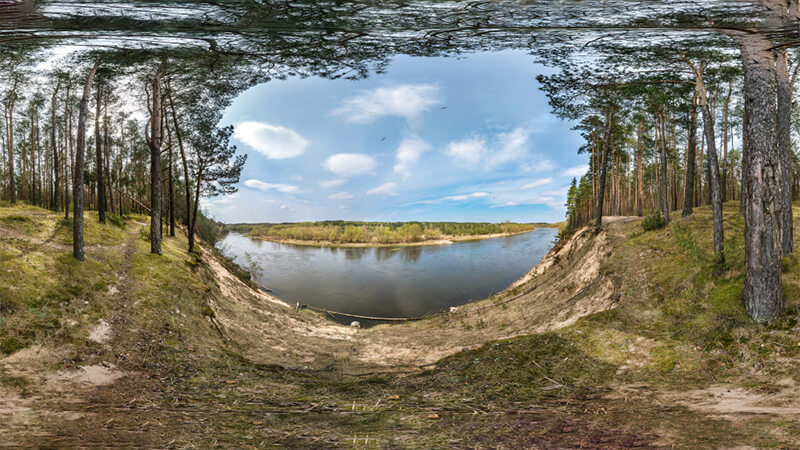The urgency of climate change is undeniable. As a global society, we face a tremendous challenge to mitigate the effects of environmental degradation and ensure a sustainable future for generations to come. Awareness is a fundamental step towards achieving this goal, and technology has a vital role to play. This article will explore the emerging influence of Augmented Reality (AR) and Virtual Reality (VR) in climate change awareness, focusing on the human-centric aspects of this innovative approach.
The Intersection of AR/VR and Sustainability
While AR and VR technologies have primarily been associated with the gaming and entertainment industries, they are increasingly being leveraged for social good. The immersive experiences offered by AR and VR can be compelling tools to raise awareness about climate change, driving empathy and provoking action.
AR for Environmental Education
AR brings a new dimension to environmental education by superimposing digital information onto the real world. For instance, AR can be used to visualize the rising sea levels or simulate the impact of deforestation, offering an immediate and visceral understanding of these phenomena.
By creating an immersive, interactive experience, AR can make abstract concepts tangible and accessible. This can be especially powerful in educating younger generations who are often more receptive to experiential learning. As they engage with these digital simulations, they develop a deeper understanding of climate change and its implications for their future.
VR for Empathetic Immersion
VR takes environmental education a step further by immersing users in a completely virtual environment. Imagine standing in the middle of a bleached coral reef or witnessing the melting polar ice caps – such experiences can evoke strong emotional responses, fostering empathy and urgency.
VR experiences like these can make the abstract and often distant concept of climate change personal and immediate. By exposing users to firsthand experiences of environmental degradation, VR can provoke a more profound emotional response, driving individuals towards more sustainable behaviors.
Humanizing Climate Change through AR/VR
One of the significant challenges in climate change awareness is the perceived distance between individual actions and their global impact. AR and VR technologies can bridge this gap by personalizing the climate change narrative.
By immersing users in experiences that show the direct consequences of human actions on the environment, AR and VR can foster a sense of personal responsibility. This shift from passive understanding to active engagement is a vital step in driving sustainable behaviors.
The human-centric design of AR/VR technologies also plays a critical role in their effectiveness. By tailoring experiences to human behaviors and emotional responses, these technologies can communicate complex environmental issues in an accessible and engaging manner. The key is to leverage the immersive and interactive capabilities of AR/VR to humanize the narrative of climate change, making it relatable and immediate for every individual.
Looking Ahead
As we grapple with the complexities of climate change, innovative tools like AR and VR offer promising avenues for raising awareness and driving sustainable action. By creating compelling, human-centered experiences, these technologies can inspire empathy, provoke urgent action, and ultimately contribute to a more sustainable future.
However, as we embrace these digital tools, we must also be mindful of the environmental footprint of the tech industry itself. Sustainable manufacturing, energy-efficient hardware, and responsible e-waste management must be integral to the tech industry’s strategy as it designs solutions for a sustainable future.
In Conclusion, AR and VR technologies hold immense potential in the fight against climate change, not as silver bullets, but as catalysts for awareness, empathy, and action. By humanizing the narrative of climate change, they can engage individuals at a deep, emotional level, inspiring them to contribute to the collective action needed for a sustainable future. As we navigate the path towards sustainability, let’s harness the power of AR/VR to educate, inspire, and drive change for the betterment of our planet and future generations.


